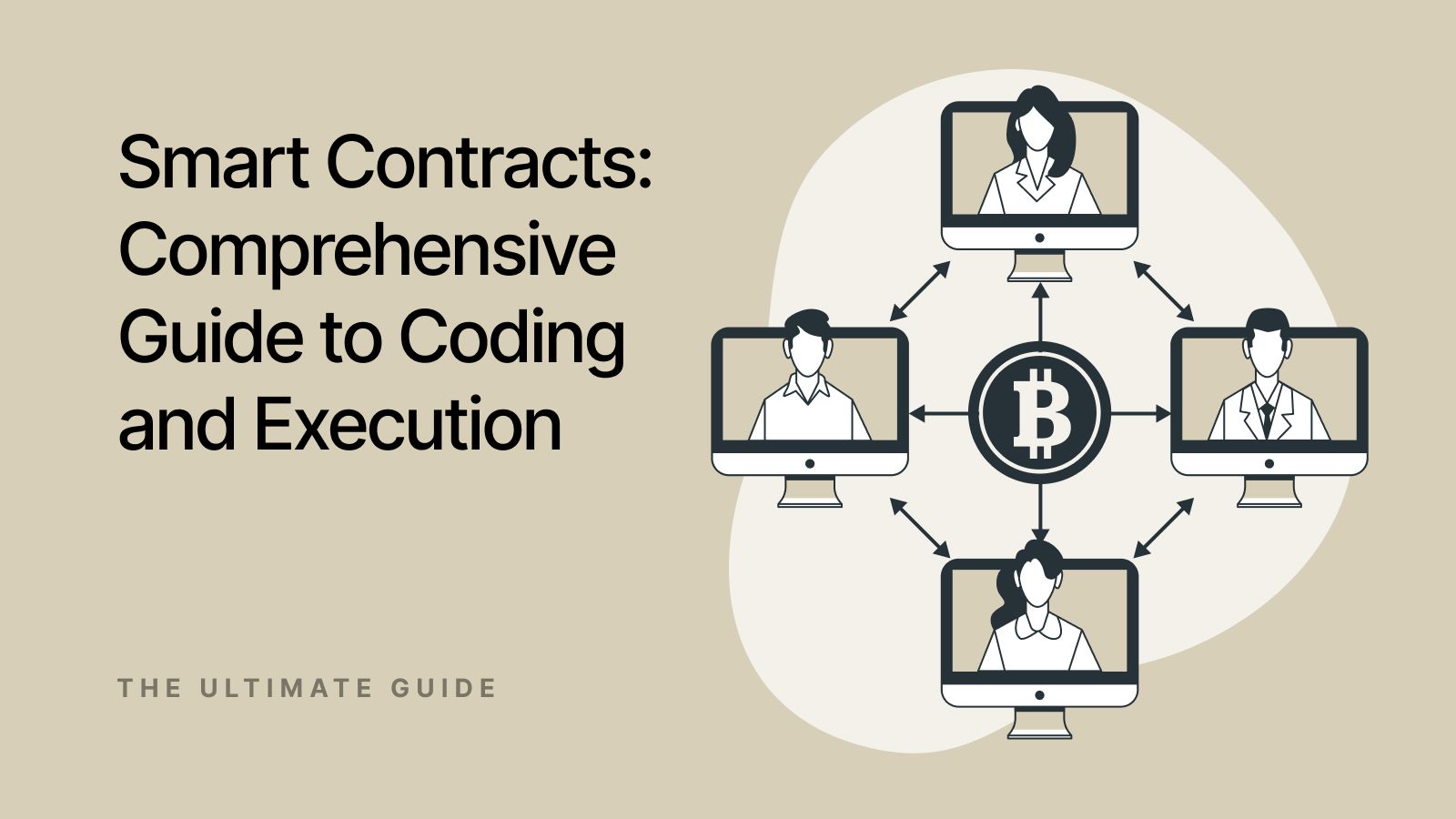Smart contracts are transforming the way transactions and agreements are executed in various industries including healthcare, banking, gaming and real estate.
Built on blockchain technology, these contracts automate and enforce the terms of a contract efficiently and securely. They ensure transparency, security, and efficiency. This article will explore the concept of smart contracts, their underlying technology, applications, and potential.
Deep Dive into Smart Contract Development
Smart contracts are self-executing contracts with the terms of the agreement directly written into code. These decentralized applications (dApps) run on blockchain platforms like Ethereum and Binance Smart Chain.
Their development has gained immense popularity due to its potential to automate, verify, and enforce the terms of a contract without the need for intermediaries. Here are the basics of smart contracts.
Blockchain Technology
Smart contracts are built on blockchain technology, which is a distributed and decentralized ledger. Each participant in smart contracts has a copy of the entire blockchain, ensuring transparency and security.
Decentralization
This is one of the core principles of smart contracts. Instead of relying on a single central authority, smart contracts operate on a peer-to-peer network, making them resistant to censorship and fraud.
Immutable Code
Smart contracts are immutable, meaning their code cannot be altered once deployed on the blockchain. This ensures trust in the execution of the contract. The parties involved rely on the predetermined rules.
Smart Contract Development Process
Smart contract development or life cycle goes through a few phases. This ensures that the technology accurately secures and defines the business requirements. Here are the steps of smart contract development
Defining Requirements
The first step is to define the requirements and specifications of the smart contract. This involves outlining the rules and conditions that the contract will enforce.
Choose a Platform
Select a blockchain platform that supports smart contracts. There are different types of blockchains for different needs. Ethereum is the most popular choice, but others like Binance Smart Chain, Solana, and Polkadot also offer smart contract functionality.
Programming Language
Choose a programming language compatible with the chosen blockchain platform. For Ethereum, Solidity is the most widely used language. Binance Smart Chain supports Solidity and Rust.
Code Development
Write the code for the smart contract according to the defined requirements. Pay close attention to security considerations, as vulnerabilities can lead to exploits.
Testing
This is a critical step in the process. You must thoroughly test the smart contract on a testnet before deploying it on the mainnet. This helps identify and fix any bugs or security issues.
Deployment
Deploy the smart contract on the chosen blockchain's mainnet. Deployment involves interacting with the blockchain to create a contract address and make it accessible to users.
Smart Contract Security Best Practices
The rise of smart contracts has presented new challenges, with security vulnerabilities being a major concern. Here are some smart contract security best practices to mitigate risks.
Code Auditing and Formal Verification
The foundation of smart contract security lies in the quality of its code. Conducting thorough code audits is essential to identify and rectify vulnerabilities. Engaging with professional audit firms or using community-driven audit platforms ensures a comprehensive review of the contract's code.
Formal verification tools can also be employed to mathematically prove the correctness of the code, adding an extra layer of security.
Principle of Least Privilege
Adhering to the principle of least privilege limits the access and permissions granted to each smart contract component. Each function and contract should have the minimum required privileges to perform its tasks, reducing the attack surface and potential impact of a security breach.
Secure Development Frameworks
Using secure development frameworks can provide a solid foundation for building secure smart contracts. These frameworks often come with well-tested, audited, and standardized components that can be leveraged to minimize the introduction of security vulnerabilities.
Avoiding Integer Overflow and Underflow
Integer overflow and underflow vulnerabilities can lead to unexpected behavior in smart contracts, potentially compromising their security. Implementing safe mathematical operations and using libraries like SafeMath in Solidity can prevent these vulnerabilities and ensure the correctness of arithmetic operations.
Consistent Use of Updated Compiler Versions
Smart contract vulnerabilities may arise due to bugs or vulnerabilities in the compiler used to deploy the contract. It is crucial consistently use the latest and most secure compiler versions, as updates often include patches for known vulnerabilities. Developers should also be wary of using experimental or outdated compiler features.
Escrow and Multisignature Wallets
Implementing escrow services and multisignature wallets adds an extra layer of security. It requires multiple parties to authorize a transaction. This reduces the risk of a single point of failure and helps prevent unauthorized access to funds or contract functions.
Gas Limit and Reentrancy Protection
Setting an appropriate gas limit prevents potential denial-of-service attacks. Additionally, protecting against reentrancy attacks can be achieved by using the "reentrancyGuard" modifier in Solidity or other similar techniques.
Regularly Updating Dependencies
Smart contracts often rely on external libraries and dependencies. Regularly updating these dependencies helps patch any vulnerabilities in the underlying code. Automated tools and services can assist in monitoring and notifying developers of updates to the dependencies.
Event Logging for Monitoring
Event logging provides an effective means of monitoring and detecting suspicious activities within a smart contract. Developers should strategically implement event logging to record important state changes. This could help identify potential security threats.
Community and Responsible Disclosure
Encouraging a strong and engaged community around a smart contract can enhance security. Establishing clear communication channels and a responsible disclosure policy allows security researchers to report vulnerabilities responsibly. It enables developers to address issues before they can be exploited maliciously.
In conclusion, smart contract development is a dynamic and evolving field at the intersection of blockchain technology and programming. As the adoption of decentralized applications grows, developers must stay informed about the latest tools, best practices, and emerging trends in smart contract development.
Following strict development processes and prioritizing security helps developers contribute to robust, trustworthy smart contracts that power the decentralized future.
